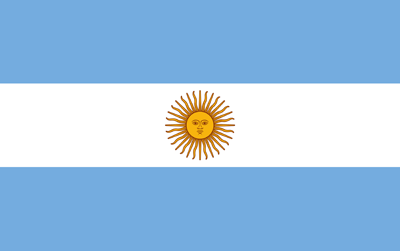Pakistan Local Cotton Market:
(The local cotton market saw mixed trends, with increased Phutti supply lowering prices and boosting business volumes. Mills favored domestic cotton over imports due to lower prices compared with international prices, but around $2.5 billion worth of cotton and yarn imports will still be needed. Internationally, cotton prices fell due to a stronger US dollar and weaker crude oil, impacting local markets)
1- The local cotton market experienced a mixed trend last week. At the start of the week, an increase in Phutti supply led to ginning units selling more cotton, resulting in lower prices. Textile spinners took advantage of the low prices and increased their purchases, improving business volumes.
2- Mills are preferring domestic cotton over imports, due to rising price trend in international markets, hence in this week international cotton business remained on lower side.
3- Currently, cotton quality is also improving day by day. Most ginning factories have started operating, and it is expected that cotton arrivals will further improve in the coming days.
4- To meet domestic textile mills requirements, approximately 60 to 70 lac bales will need to be imported. Additionally, large quantities of cotton yarn are also being imported. The total cost of importing cotton and yarn will be around $2.5 billion.
5- The international cotton market experienced a negative trend, which also impacted the local cotton market, with a decline of 100 to 300 rupees recorded. The cotton market in Sindh faced a sharper decline compared to Punjab, affecting Punjab’s market as well.
6- ICE cotton futures slipped to a one-month low due to the pressure from a stronger US dollar index and declining trends in commodity prices such as crude oil and grain. A higher US dollar discouraged purchases of US cotton, while weaker crude oil dampened market sentiment for ICE cotton.
7- The US dollar index hit its highest level in over two months, settling above 103, which increased the cost of cotton for overseas buyers. Crude oil prices eased by nearly 2 percent following OPEC’s forecast of slow global demand in 2024 and 2025.
8- Weaker crude oil prices reduced the production cost of polyester fiber, which competes with cotton.
9- As of October 15, 2024, the PCGA reports a total cotton arrival of 3.1 million bales, marking a 48.26% decline from 6 million bales in 2023. Punjab’s production dropped by 53.38%, Sindh’s by 44.52%, and Baluchistan reported 94,850 bales this year.
10- Bangladesh’s cotton consumption is expected to rise to 7.8 million bales in MY 2024-25, with 7.7 million bales to be imported, a 2% increase from last year, according to the USDA.
11- Brazil’s cotton prices saw slight fluctuations in early October, with market liquidity low as focus remains on fulfilling contracts. By October 10, 63.67% of the 2023-24 crop had been processed, and CONAB forecasts a 2.9% increase in planted area for 2024-25 but a 3.1% decline in productivity, resulting in a projected production of 3.67 million tons.
12- Last week, cotton prices in Punjab and Sindh showed soft trend and traded in range of 17,000 to
Rs 18,000 per maund, (USC 0.75~0.79 lbs). In Sindh, cotton rate was Rs 17,000 to Rs 17,900 per maund, while in Punjab it ranged from Rs 17,100 to Rs 18,000 per maund. KCA dropped 400 to at the of Rs. 17,600 per maund, PSF was same at Rs. 357 PKR/kg.
Local Yarn Market:
(Despite stable yarn prices, subdued activity and cash flow constraints hinder operations. Imported yarn shortages add pressure. Suppliers balance inventory while navigating rising costs. The market outlook remains cautious, influenced by global factors)
1- The local yarn market exhibited stable activity this week, with steady yarn prices and average business. Cash flow constraints continued to hinder operations. The gap in imported yarn supply has also impacted local businesses and sales.
2- Mills carry no huge stocks and manage production and sales with ready deliveries.
3- PSF prices remained stable this week and are expected to continue stable by next week.
4- The Faisalabad yarn market experienced subdued activity, with stable prices for polyester viscose (PV) and other cotton yarns. However, cash flow constraints and tax-related challenges posed by the Federal Board of Revenue (FBR) hindered business operations in the region.
| Count | Price in Pak Rupees / 10 LBS | Price US$/Bale |
| 16/1 Carded Weaving | 3325 – 3400 | 480 – 495 |
| 20/1 Carded Weaving | 3400 – 3500 | 495 – 510 |
| 30/1 Carded Weaving | 3750 – 3900 | 545 – 565 |
| 20/1 Combed Weaving | 3900 – 4000 | 565 – 580 |
| 30/1 PC Carded Weaving 52:48 | 3100 – 3400 | 450 – 495 |
| 40/1 Combed Compact Weaving | 4425 – 4525 | 640 – 655 |
| 60/1 Combed Compact Weaving | 5900 – 6050 | 855 – 880 |
| 80/1 Combed Compact Weaving | 7950 – 8150 | 1155 – 1180 |
| 40/1 CVC Carded Weaving 60:40 | 3850 – 4000 | 560 – 580 |
Export Yarn Market:
(The export yarn market experienced slower business activity this week, with fewer deals closing despite steady inquiries. While Chinese customers have been cautious in placing new orders, European buyers showed more engagement, closing several deals)
1- The export yarn market showed nominal business activity this week.
2- Suppliers remained firm and stable in asking their prices due to handsome sale in hand.
3- Cotton prices remined under slight fluctuation during the week but mainly maintaining the stable trend.
4- Chinese customers have begun opening LCs for pre-holiday bookings, indicating a positive trend for future business
5- Some business was closed where customers achieved their target prices and suppliers were happy seller.
6- European customers were more active, with multiple deals finalized this week, and additional inquiries are in progress, signaling the potential for further purchases in the coming weeks.
| Export Yarn Prices | ||||||||||||||||
|
Local Fabric Market:
(Slow business activity was seen in local fabric however conversion based orders were good which placed by the home textile exporters. Local brands were active and kept on feeding looms. Looking ahead, we anticipate continued slow sentiments in the market. However, prices are expected to have an upward tendency)
1- The local fabric market experienced a sluggish week, closing with limited trading activity across both narrow and wider-width fabrics.
2- Local finishers remained on the sidelines, unable to generate bulk inquiries, resulting in a week characterized by slow momentum and firm price trends.
3- Despite the overall market slowdown, the home textile sector showed some activity. Inquiries were shared, and orders were booked on air jets and Sulzer looms after rigorous negotiations on conversion.
4- Currently, most air jet weavers have secured orders for their narrow-width looms until the end of November 2024 and their wider-width looms until the third week of December 2024, with onward deliveries being offered.
5- Looking ahead, we anticipate continued slow sentiments in the market. However, prices are expected to have an upward tendency.
Export Fabric Market:
(Reasonable business activity was seen both from Far Eastern and European/USA buyers. Prices have remained stable for the last couple of weeks. Suppliers are expecting improved business activity in days to come)
1- Moderate business activity was seen in export fabric market; however, price challenge remains main factor
2- Customers emphasis was to reduce the prices but suppliers were unable to accommodate, hence no bulk orders were reported
3- Fabric prices have been stable for the last couple of weeks due to stable yarn prices
4- Currently suppliers are booked till end of Nov and offering early ~ mid-December onward deliveries.
5- Mixed trading activity was seen from European and USA buyers
6- Prices for wider width was firm due to firm yarn prices, mainly for fine yarn counts.
7- Suppliers for wider width are currently booked till end of Dec and offering early ~ mid-January onward deliveries.
| Local and Export Fabric Prices
| ||||||||||||
|
Bed Linen and Towel:
(Order confirmations have been significantly decreased while price gap is increasing steadily. Suppliers are inclined towards considering imported yarns as well as unconventional cost cutting methods to enable them to meet sharp and highly competitive targets)
1- Order confirmations have significantly decreased in home textile sector.
2- Price gap is the major issue. Customer targets are not being met even at breakeven.
3- It is anticipated that USD will depreciate in coming weeks causing further increase the price gap.
4- Suppliers are more inclined towards imported yarns for most of their made up offerings.
5- Many HT suppliers will participate in this month’s canton fair in China as well to observe the market trend and viability of imported yarns.
Garments:
(Overall, garment factories are running between sixty and seventy percent of their production capacity and are attempting to fill the void by taking on more orders. A positive indication for future purchases is that certain brands are also working on FW25 advancements)
1- Pakistan’s garment sector has faced numerous challenges. Despite increased competition from Bangladesh, Vietnam, and Cambodia in low-cost textile production, Pakistan’s apparel industry still receives sufficient orders to meet their production capacities.
2- In contrast, dyeing units experienced a scarcity in the 3rd quarter of 2024. As time passes, a glimmer of optimism emerges as brands place new developments for FW25 that represent positive views. Ultimately, this will drive demand in the apparel industry, resulting in orders in the third quarter of 2024. However, factories are offering deliveries from the Mid of Jan 2025.
3- The worldwide denim market is struggling with inflation, but makers remain optimistic about the future
Crude Oil:
1- Crude Oil prices opened at USD 73.83 with lower level as compared to last week closing figures. in this week, crude oil prices showed downward trend and closed on lower side by the end of week.
2- In last day of the week, Crude Oil price closed at USD 69.22 with decrease of 4.61 USD cents as of opening figure of week.
| Opening of Week | Closing Of Week | Change | |
| Price | 73.83 | 69.22 | -4.61 |
Exchange Rate:
1- In last week values of Pak rupee appreciated against US Dollar’s, other major currencies showed mix trend in both interbank and open markets.
2- At the end of week, Euro closed on a positive note with figure of 1.08 and British Pound also closed on positive note with figure 1.30 against USD.
| Selling | Buying | |
| LC Sight | 275.76 | 275.71 |
| LC 120 Days | 264.95 | 264.90 |
| Open Market | 281.08 | 274.92 |
New York Cotton Future:
The New York Cotton Futures (NYCF) began the week on a weak note compared to the previous week’s closing figures.
Throughout the week, the market showed mix trends and closed on lower side by the end of week.
1- December 2024 Closed at 70.99, marking a drop of 4 points from the previous week.
2- March 2025 Ended at 73.09, down by 10 points compared to the previous week.
3- May 2025 Finished at 74.53, reflecting a decrease of 11 points from the previous week.
4- July 2025 Closed at 75.47, down of 9 points from the previous week.
Liver Pool Indices:
1- Liverpool Index A was opened at 84.50 on higher level from the previous week of closing figure.
2- In this week Index “A” showed downward trend and closed on lower side by the end of week.
3- At last day of the week, LPI “A” closed at 82.35 with decrease of 215 points.
| Opening of the Week | Closing of the Week | Change | |
| Index A | 84.50 | 82.35 | -2.15 |







